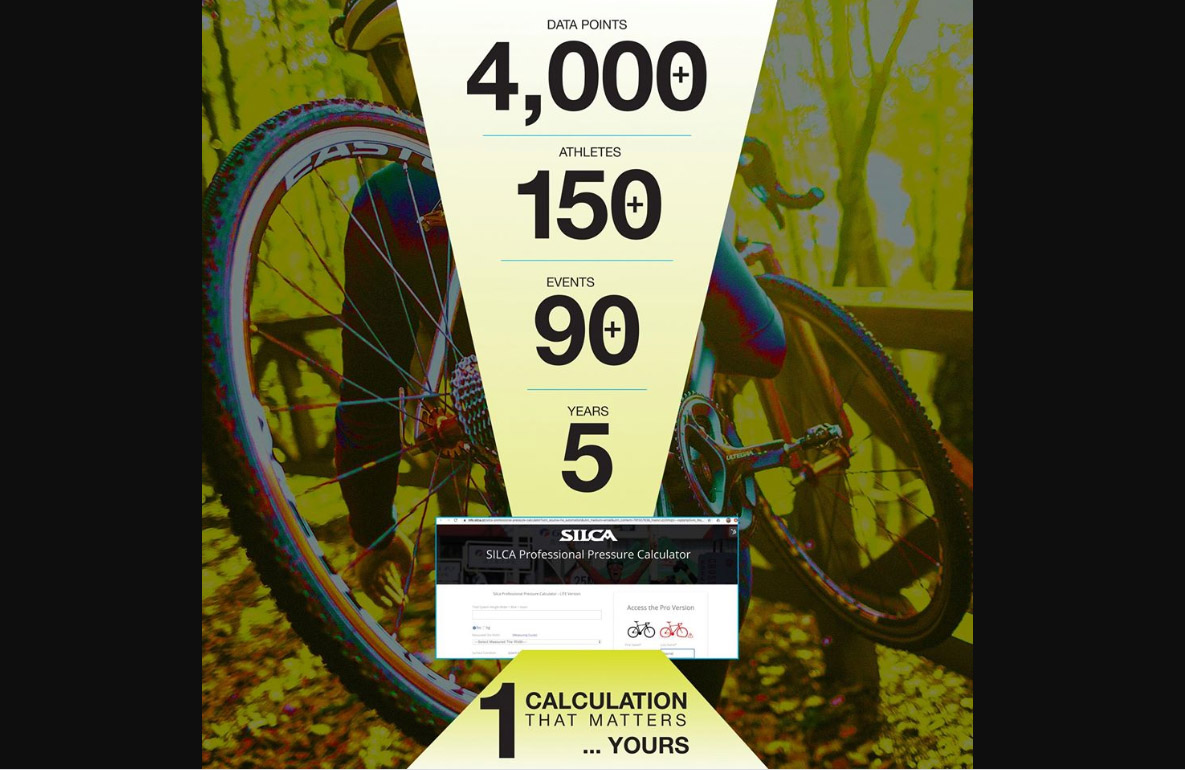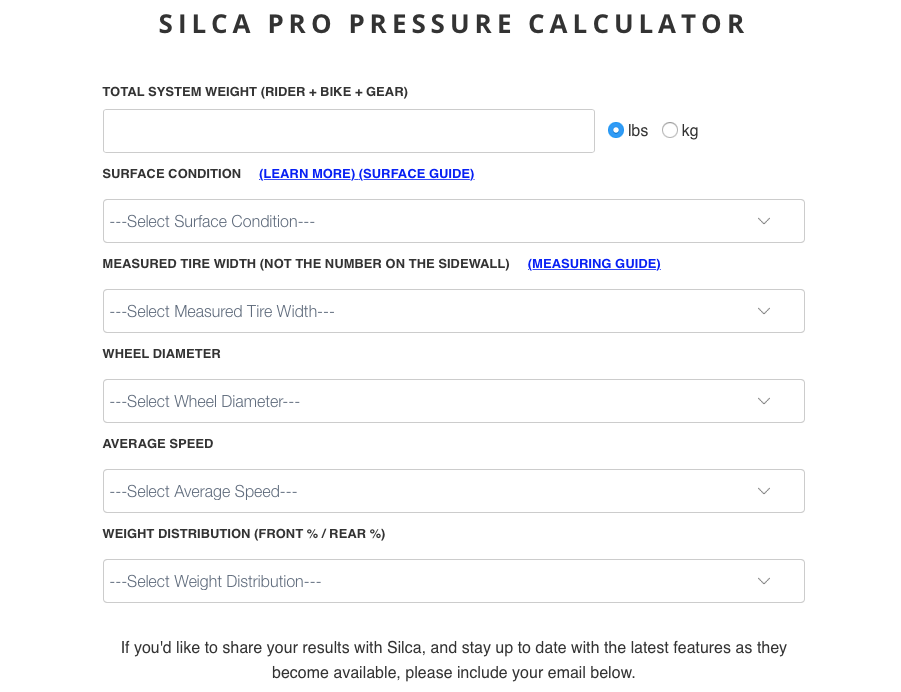Ever wonder what tire pressure you should be running? Maybe you’ve heard that lower pressures are actually faster, while simultaneously being told by someone else that higher pressures are better? Regardless of what you’ve heard, the team at Silca has a massive amount of time invested in determining the ideal pressures for ProTour teams, Ironman Triathletes, plus Olympic and World Champions. Supposedly the calculator pulls from 4,000 data points from 150 athletes over the course of 5 years at 90 different events.
After the initial post, Silca’s President Joshua Poertner reached out to us to add some back story saying, “this calculator is the first in the world based on actual tire spring rate (which is very hard to measure) rather than something like tire drop which is much easier to measure. Because the algorithm is fully mathematical, it takes each pressure calculation and compares it to an energy required to bottom out the tire in an impact and then will also warn you about pinch flat risk if you are using too small a tire for a given surface… it will even give a recommendation for how much more pressure, or more tire width you might need for your weight/speed/surface condition.
The algorithm was built by curve fitting these 4000+ real world optimizations, so if you want to calculate Peter Sagan’s Roubaix winning pressure, you can just enter his weight/tire size and cobbles and you’ll get his exact pressures… same for Bettiol’s Flanders win, multiple Dirty Kanza winning pressures, and so on.”
Since there’s no single pressure that will work for every rider, Silca has taken that pressure knowledge and packaged it into an online tire pressure calculator that you can use, for free. The most basic form is the LITE version which limits you to inputs for the total system weight (rider + bike + gear) and the measured tire width.
The more comprehensive Pro version is still free – but you’ll have to cough up your email. After dropping my address in to check out the Pro version I received a sale notice via email just 18 minutes after receiving the welcome email, so it seems like even if you don’t add your email to the Pro form at the bottom, you’re still signing up for email notifications from Silca. If this bothers you, it’s easy enough to unsubscribe.
By adding your contact info you gain access to more detailed inputs to help you dial in your tire pressure even further. That includes details like the surface condition from indoor wood tracks to Category 4 gravel, wheel diameter, average speed, and the bike’s weight distribution or type of bike.
Curious to see what it would recommend for me, I punched in the numbers for my Why Cycles PR road bike. It’s currently running 700c x 28mm GP5000 tires that actually measure 30mm on the Zipp Firecrest rims, and I’m guessing my total system weight is somewhere around 172lbs. When calculated for Worn Pavement/Some Cracks and for the Fast Group Ride setting, it recommends pressures of 70psi for the rear, and 68psi for the front. That’s lower than I have been riding them, but not by much – I typically pump up to 75/74psi before each ride.
Time to drop some pressure for the next ride!



